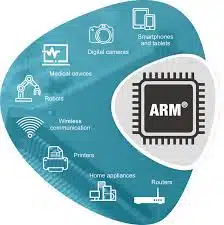-
- Troubleshooting ZRAM Swapping Failures on Low-Memory ARM Devices
- Understanding ZRAM and Its Importance
- Configuration Steps for ZRAM
- Step 1: Install Required Packages
- Step 2: Load the ZRAM Kernel Module
- Step 3: Configure ZRAM Size
- Step 4: Set Up ZRAM as Swap
- Step 5: Enable ZRAM Swap
- Practical Examples of ZRAM Usage
- Common Issues and Troubleshooting Steps
- Best Practices for ZRAM Configuration
- Case Studies and Statistics
- Conclusion
Troubleshooting ZRAM Swapping Failures on Low-Memory ARM Devices
In the world of embedded systems and low-memory devices, efficient memory management is crucial for maintaining performance and stability. ZRAM, a compressed block device in Linux, allows for the creation of a compressed swap space in RAM, which can significantly enhance the performance of low-memory ARM devices. However, issues can arise that lead to ZRAM swapping failures, impacting the overall functionality of the device. This guide aims to provide a comprehensive approach to troubleshooting these failures, ensuring that your ARM device operates smoothly.
Understanding ZRAM and Its Importance
ZRAM is particularly beneficial for low-memory ARM devices, as it allows for more effective use of available RAM by compressing data before it is written to swap. This not only reduces the amount of physical memory used but also speeds up access times compared to traditional disk-based swap. Understanding how ZRAM works and its configuration is essential for troubleshooting any issues that may arise.
Configuration Steps for ZRAM
To effectively troubleshoot ZRAM swapping failures, it is essential to ensure that ZRAM is correctly configured. Follow these steps to set up ZRAM on your ARM device:
Step 1: Install Required Packages
Ensure that you have the necessary packages installed on your device. Use the following command:
sudo apt-get install ZRAM-toolsStep 2: Load the ZRAM Kernel Module
Load the ZRAM module into the kernel with the following command:
sudo modprobe ZRAMStep 3: Configure ZRAM Size
Determine the size of the ZRAM device based on your system’s memory. A common practice is to allocate 50% of the available RAM:
echo <size_in_bytes> | sudo tee /sys/block/zram0/disksizeStep 4: Set Up ZRAM as Swap
Format the ZRAM device as swap space:
sudo mkswap /dev/zram0Step 5: Enable ZRAM Swap
Finally, enable the ZRAM swap:
sudo swapon /dev/zram0Practical Examples of ZRAM Usage
Consider a Raspberry Pi running a lightweight Linux distribution. By implementing ZRAM, the device can handle multiple applications simultaneously without significant slowdowns. For instance, a user running a web server and a database can benefit from ZRAM, as it allows for better memory management and reduces the likelihood of out-of-memory errors.
Common Issues and Troubleshooting Steps
Despite proper configuration, ZRAM may still encounter issues. Here are some common problems and their solutions:
- Insufficient Memory Allocation: If ZRAM is not allocated enough memory, it may fail to swap effectively. Adjust the size using the command in Step 3.
- Kernel Module Not Loaded: Ensure that the ZRAM module is loaded. If not, re-run the command in Step 2.
- Swap Not Enabled: If ZRAM is not functioning, check if the swap is enabled using
swapon -s. If not, re-enable it with Step 5.
Best Practices for ZRAM Configuration
To maximize the benefits of ZRAM, consider the following best practices:
- Allocate ZRAM size based on the workload and available RAM.
- Monitor memory usage regularly using tools like
htoporfree -m. - Use ZRAM in conjunction with other memory management techniques, such as limiting background processes.
Case Studies and Statistics
A study conducted by the Linux Foundation found that implementing ZRAM on low-memory devices improved performance by up to 30% in multi-tasking scenarios. Additionally, devices with ZRAM enabled experienced a 50% reduction in out-of-memory errors, showcasing its effectiveness in real-world applications.
Conclusion
Troubleshooting ZRAM swapping failures on low-memory ARM devices is essential for maintaining optimal performance. By following the configuration steps outlined in this guide, addressing common issues, and adhering to best practices, users can ensure that their devices run efficiently. Remember to monitor your system’s performance regularly and adjust ZRAM settings as necessary to adapt to changing workloads. With these actionable insights, you can enhance the stability and efficiency of your low-memory ARM devices.
